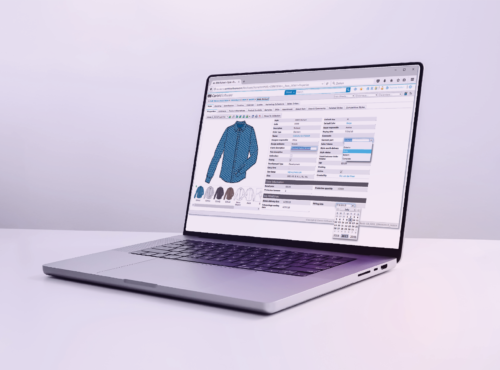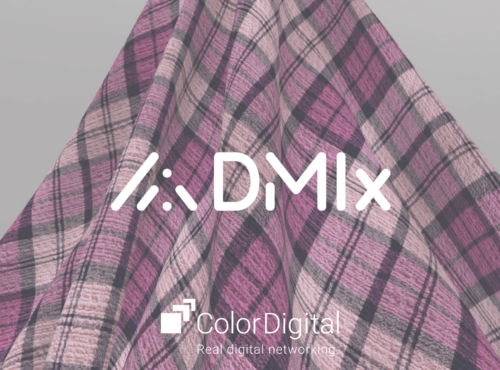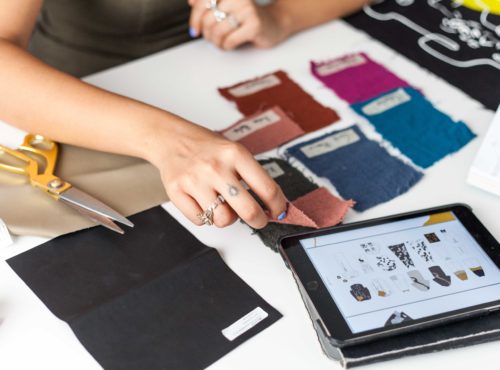 Steven PASSARO : between traditional sewing and 3D technology
Steven PASSARO : between traditional sewing and 3D technology
3D for a more sustainable fashion
For a little more than 2 years we have been living a strong mutation in the fashion industry. The pandemic has considerably shaken up our consumer and social habits (less going out, more home office) and has changed the way we dress.
Climate change, which is now one of the major concerns of the population, also creates a form of urgency in our questioning. Consumers are looking for committed brands which offer more sustainable fashion.
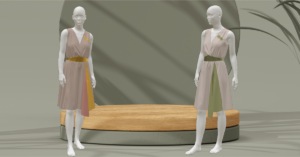
It’s clear, we need to change the way we design, develop, and produce. And there are more and more innovative tools, such as 3D, to contribute to this change.
1. CSR & Co.: or how laws are pushing brands to change?
To begin, let’s quickly recall the challenges of CSR. CSR aims to implement a strategic vision with a strong commitment to sustainable development, both human and material. It is not a certification, but a voluntary approach from the company. CSR is aimed at all types of companies, whatever their size, status, or activity.
Even if it is not mandatory, CSR meets the requirements and challenges of the ecological transition. In addition, two recent laws have forced the fashion industry to rethink the product circuit.
• The Anti-Waste for Circular Economy law (AGEC), which came into force on January 1, 2022. For the fashion industry, this law means that it is no longer possible to destroy unsold goods. This encourages brands, importers, and retailers to revalue the remaining stock through donation, reuse, re-cycling or recycling. With these new measures, brands are encouraged to manufacture and produce differently.
• The climate and resilience law, of August 22, 2021, which aims to push us to reduce greenhouse gas emissions by 40% by 2030. This law involves creation of an environmental label (Nutri-score type on our packaging), which will inform consumers about the impact, especially on climate, of the products and services they buy. These labels will be mandatory for clothing.
Actually, this law is in an experimental phase and has not been made mandatory for the textile sector. Nevertheless, it’s essential for brands to start now to reduce their carbon impact on the whole product circuit.
2. The consumer: or when the consumer pushes our economic model to change.
Since 2017 ADEME (the French Environment and Energy Management Agency) has been asking French consumers about their concerns. In 2021, the climate emergency was among the major concerns. And to realize this, here are some figures to better understand the French expectations:
• 56% of consumers say it is urgent to act for the future of the planet and for 14% of them, it is already too late
• 72% of French people have changed their buying habits to become more responsible consumers
• Second-hand purchases have increased by 140% between 2019 and 2021 (thanks to Vinted in particular)
• 80% of French people want to see proof of commitment from brands
• Nearly 70% of French people say they value the places and conditions in which clothes are made.
Consumers are increasingly incorporating the 4Rs: Reuse, Recycle, Rethink and Reduce into their daily lives, and they have succeeded in pushing brands to follow the move. Second hand, donation, upcycling are very common alternatives today. Materials such as polyester are also recycled and reintroduced into new designs. Even the construction industry is getting into the act by using recycled textiles to make insulation.
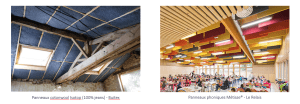
But even if these two R’s and all the alternatives linked to them give a positive image, it is not a sustainable situation for a brand’s strategy. Selling at a loss or giving away to recycle is not profitable, it is a proof that there is a surplus and therefore a bad management of the stock. For a brand to be in phase with consumer demands and for the ecological transition to be real, it is imperative to Rethink and Reduce.
As a reminder, the fashion world is one of the top 5 polluters on the planet. We know that:
• 1 European will buy an average of 26kg of clothes per year to throw away 11kg.
• We will need 2700L of water for 1 t-shirt in 100% cotton; that is 2,5 years of drinking water for one person (1,5L/day)
• 20% of the world’s drinking water pollution is due to dyeing and finishing of fabrics
• 10% of the world’s CO2 emissions are generated by the fashion industry, which is more than all air and sea transport combined.
Fortunately, change is possible, and at all levels of the product life cycle. If we manage to rethink the organization at each stage, we can eventually create a virtuous cycle.
So how can new technologies help reduce the carbon impact in the creation of a collection? Let’s decipher each step of the product cycle.
THE CREATION
👙 The new generation of trend offices
Today, there are artificial intelligence software dedicated to monitor millions of images viewed by the population. The principle is very simple: brands just have to determine their target and then analyze what their customers are looking for/looking at on Instagram, at their competitors or during fashion shows for example, with library proposed by the software. This allows the studio to anticipate the expectations for the next collection, in terms of shapes, colors, prints. The goal is to help understand client’s needs before they express them, and thus target the right trend.

🧵 Material sourcing 2.0
Some material suppliers have taken the step of digitizing their fabric catalogs. You will find the same information as if you had the fabric in real life: certificates (Oeko-Tex, GOTS, EcoCert), prices, etc. You just have to download the material compatible with your 3D software and try it directly on your model to see how it looks. You can also do this with robracks, by simply scanning the sample you want to test.
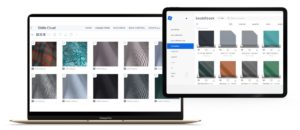
This allows designers to better project themselves and avoid launching several prototypes to validate only one fabric. You can also work on other color/pattern variants and push the design thinking.
If you want more information on digital fabrics, I invite you to watch the replay of my last webinar on this topic.
It is important to know that when we buy standard cuts, we usually have a roll of about 12 kg or 30 m. If we send this roll from Italy to France, we spend 10.5 kg of CO² just for the transport (so without counting the dyeing, finishing etc.). With 3D, you only generate 50 to 90g of CO² for a scan with basic maps and up to 1 kg with integrated physical properties. The carbon footprint is therefore considerably reduced!
Let’s move on to the second stage of the product life cycle:
THE DEVELOPMENT
🧥 3D prototypes (perhaps the stage where we reduce our carbon impact the most).
The carbon footprint of a model development can go up very quickly between transportation, different prototypes, dyeing etc. Working with 3D allows you to refine the model in a virtual way, without limiting your creativity: in a few clicks you can test your model, readjust your pattern, check the style, the fit… You reduce considerably the number of prototypes.
Of course, working with 3D requires a real change of mindset. Today in collections, teams work mainly in silos and with a hierarchy (the studio first, then development…). 3D encourages more collaborative and transverse work. This is not at all part of the fashion culture. Yet, this new way of working could open new opportunities.
There is software that allows you to calculate the carbon footprint of a garment’s life cycle from the fiber to the store. This will be very useful when it will be mandatory to mention the eco-score of the garment.
THE PRODUCTION
📏 Checking the fit with 3D
Production is closely linked to retail. In one of my webinars about the stakes of 3D, I explained that 30% of returns are related to a fit problem. And this is a particularly costly problem for brands (between returns, refunds, exchanges etc.). The ideal is to make sure upstream that the good to go is in phase with the morphology of the customers, before producing in series.
Here is an example. I have here 3 sizes: 36, 40 and 46. You can see on the visual that the size 46 is quite tight at the hips and that the bottom of the dress has not been graded correctly.

This type of grading problems can go unnoticed between 34 and 42 thanks to the ease, but on the other hand on the sizes a little further from the basic size, the article will not fit. Thanks to 3D, we can modify the pattern and then check again the fit on our avatars size series.
On this new version, we can see that the pattern is well-adjusted and that the pressure of the material is homogeneous on all sizes. From there, we can launch production.

Beyond the speed of this technique, in reality the verification is even more complicated to predict because it is rare to have cabin models of all sizes.
🧩 Production placement:
Some CAD editors have really optimized their placement software with algorithms and can automate the placement of the fabric with a very high efficiency. These softwares also allow calculating the material consumption in one click and thus to evaluate the consumption of a production very upstream.
Let’s not forget that the quality of the assembly will extend the life of the garment.
TRANSPORTATION
Even if it can hardly be compensated by digital tools, transportation affects all stages of the product circuit. Small and simple commitments can help you reduce your carbon footprint.
• Eco-friendly packaging: Stop using plastic covers, and use biodegradable and compostable covers, made of corn starch, for example.
• Reduce the amount of empty space in boxes. Air weighs down in transit!
• Keep in mind that with 3D you will inevitably reduce the number of trips to and from the factory for fabrics, materials, prototypes, etc. And to finish convincing you, here is a small comparison of the carbon footprint by type of transport:µ
– Air:500 g CO² emitted / km done / ton
– Sea: 10-40 g emitted / km driven / ton
– Road: 60-150 g CO² emitted / km driven / ton
– Rail: 30-100 g CO² emitted / km driven / ton.
And if 3D has not yet been integrated into your company, remember that the ideal is of course to get closer to the suppliers and factories with which you produce and to relocate as much as possible!
RETAIL
🛒 Visual merchandising
Many visual merchandising solutions exist today and allow you to integrate 3D models in a software, to visualize the items and optimize their sale during their entire life cycle in store. This avoids the need to use prototypes all the time and to set up school stores, which are very time-consuming and dependent on physical prototypes. These solutions also allow you to see the sales and forecasted quantities from the beginning of the collection.
If you want to know more, look at our webinar: How to optimize your visual merchandising.
📊 Data for a better fit
To avoid returns, which, as we said above, are due to a fit problem in 30% of cases, it may seem relevant to seek to know its customers better or to help them during the fitting. For this, stores can have an important role to play.
– In the collection of data via the body scan on the one hand: gathering the measurements of its customers to obtain a more accurate database on the profile of its buyers can help the production in the design of its models.
– In sales advice: with 3D, customers can be advised on size and project themselves at the time of the fittings thanks to augmented reality, for example. This can take the form of connected mirrors, personalized avatars, etc.
As we have seen, new technologies are perfectly integrated into all stages of the product life cycle. They allow us to deeply rethink the way we create, produce, develop, transport, and sell our collections. The adoption of these 2.0 tools requires a real change management, a deep mutation of mentalities and of our way of working. It is however a necessity to reach the virtuous circle we talked about at the beginning of this article.
If we manage to reduce the carbon impact at each step of the product circuit, the ambition of reaching the -40% greenhouse effect is achievable.
In summary
• Integrate the 4Rs: Recycle, Reuse, Rethink and Reduce into the product cycle from the design stage
• Rethink and integrate tools like 3D and others to help you reduce carbon impact and water consumption
• 2030 is tomorrow, when we are supposed to have an operational product circuit that emits -40% of CO².
• Rethinking and modifying a product circuit is not done in one season. It is a transformation that requires the support of all the teams, and it takes time.
You want more information or discuss about your digitaliszation projects ? Contact me by email : alexandra.buor@fit-retail.com or by LinkedIn

